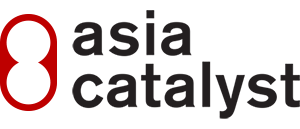by Meg Davis
The strategic plan is the most important document of your organization. It defines who you are and why you do what you do. It ties all your work into your vision for the future. This is how we and the groups we train create a strategic plan. You might want to print out the model we use to look at while you read this (in English here, in Chinese here).*
- Bring everyone together – The plan should be created collectively by ALL of the
board, staff and volunteers of your organization – including student interns,
administrators, and assistants.
This is essential because it is one chance for everyone to come together and agree on shared goals. If you as director just create the plan by yourself and hand it down to the masses, you miss a chance to build unity, and your colleagues will not feel as invested in their goals.
It is also important to include everyone as a matter of principle. If we want to build a more just and egalitarian world, we have to begin in our own organizations, by upholding basic rights and respecting every individual’s right to participate in making the decisions that affect them.
Finally, your plan will be strengthened by other people’s suggestions. As the director, you will find that useful ideas come from every part of the organization, and you might find that the people who clean the office and make the tea know a thing
or two that you need to learn. (I put in that part because some of our colleagues in Asia have staff who make tea and buy lunch – at Asia Catalyst, we have to make our own tea, lol.) Ideally, it’s best to have someone you trust from outside the organization facilitate the meeting, as they will be more objective and will see things that people inside the organization miss.
Set aside time to plan for at least a few hours. We like to buy food and drink for the group, and ask everyone to turn off cell phones and close email. We post large sheets of paper up on the wall and ask someone with good handwriting (usually that’s not me) to draw and fill in the boxes, so that everyone can see the plan as it develops.
One of the things that most of us find challenging is keeping things simple. We directors tend to write vague mission statements so that we have lots of flexibility, and commit to more programs than we can really carry out with a small number of staff. But this harms our ability to raise funds, and eventually burns out everyone connected with the organization. A simple, clear plan is part of building a healthy organization.
If you find during this planning meeting that you are making tough decisions and deciding not to do certain things that you really want to do, then you are probably doing this correctly. The core of strategic planning is evaluating what resources you have, and making tough choices about what you can achieve.
2. Always go from right to left – Move from right to left, filling in one column at a time: Start by reviewing your vision and making sure you all still agree with it, then move to the left and discuss outcomes, then impacts, actions, and finally resources.
The reason why we do it this way is to make sure that our vision is aligned with our goals and our actions, all the way down to what we are doing next week. Try not to think about the actions (programs for this year) until you finish ALL the columns to the right of it. The number one mistake most groups make is to decide on this year’s programs before the other columns on the right are done. If you do that, you just end up with a confused plan.
3. VISION: The 20-year goal – This is the ultimate vision of your organization, the thing that motivated you to start doing this work in the first place. When you achieve this vision, you can turn off the lights, close the office and go home. The vision should be even simpler than your mission statement: a short, clear statement of only one or two sentences that describes what you hope will be the end result of your work. It should be ambitious and inspiring.
Good examples: “End homelessness in New York City”, “All courts in Indonesia sentence drug users to rehabilitation, not prison.” Some of the groups we work with have something like this: “All people with HIV/AIDS in (X country) know and can implement their legal rights.” Make sure you have consensus in the whole organization about this statement.
4. OUTCOMES: The 5-10 year goal – What are the steps that need to happen in five to ten years in order to achieve
your 20-year goal? These are big changes, but they are also things that are clear and measurable milestones – a change in law or policy, or a new facility established. At the same time, these outcomes should be realistic.
There should be no more than three or four outcomes, and they should all clearly be steps towards the 20-year vision.
Examples include, “Build new homes for 500 homeless families in New York City”, or “All hospitals in our province will provide methadone to patients who are recovering injection drug users.”
5. IMPACTS: The 2-year goals – This is often the most difficult part of the process, because it’s the part where vision meets reality. We find that most organizations spend a lot of time working on this column.
In this column, you need to come up with specific, achievable results of your work in the next two years:
· Each of these should lead clearly to at least one of your 5-year outcomes.
· Each outcome should have at least one impact that connects to it.
· Try not to have more than 5-8 impacts. Eight impacts is already a lot to accomplish in two years.
You will need to make tough choices in this section and be honest about what you can really achieve with the staff and funding you will have this year.
You also have to be sure that your impacts logically result from what your organization actually does. This is where common sense becomes important. For instance, if all your outcomes (5-10 year goals) are about legal and policy change, but all your current programs are services such as providing emergency food and medical care, then you will have a hard time coming up with impacts that make sense. Your plan is not logical. You either need to change what you do, or change your outcomes.
6. ACTIONS: The plans for the next year – Once the vision, outcomes and impacts columns are done, the actions column is easy. It’s just the programs you will do this year in order to create the 2-year impacts.
For instance, if one impact is “40 people trained in legal rights”, your action could be “two legal rights workshops”.
Each action should have at least one arrow pointing to an impact. In this column, you should try to be as specific as possible, using specific numbers.
7. RESOURCES
– Writing all these goals can be overwhelming. In the resources column, you brainstorm about people who can help you with your actions: donors, peer NGOs, experts, other allies. List people you know already, and people you could begin to reach out to.
The nice part about this step is that it reminds everyone that we have a lot of people out there who can help us get things done. It helps us to leave the planning meeting feeling hopeful.
8. VERY IMPORTANT: LEAVE NOTHING OUT – Every single program activity of your organization must be included in the plan. It’s important to be honest about what your organization is doing. This is where the model we use is helpful – it makes people look at issues they might ignore in their daily work.
For instance, if your executive director spends 50% of her time speaking at international conferences, then that should be an action on the plan which connects to impacts and outcomes. If it doesn’t contribute to any clear goals, then her traveling is a drain on the organization, and she may need to spend more time doing something else.
If you’re spending half your budget running a shelter for battered women, but all your outcomes are about changing national policy, you can’t just leave the shelter out of the plan and pretend that you’re not doing it (believe it or not, we’ve seen groups try to do this). Maybe you need to think of ways that the shelter can help to achieve policy change. Or maybe you need to add steps in the plan to make the shelter self-run, so that you can focus on your real goals.
Look at every single thing you do and make sure it is helping you reach your goals.
9. Check everything
– Take one more look:
· Does every box have an arrow that points to another box?
· Does it all make sense?
· Will the Actions result in the Impacts, and will those lead naturally to the Outcomes?
· Have you included absolutely everything you do in your work?
We recommend showing the plan to a few friends & advisors to get their feedback before you make the plan final.
10. How to use the plan when it’s done
- Print out the plan and post it on your wall. Toast yourselves for creating a thing of great beauty and usefulness. Keep it up there where everyone in the organization can see it every day.
- Create a monthly timeline – Create a table or spreadsheet with your list of actions on the left, and the months across the top. Plan out the steps involved to complete each Action each month, and the name of the person responsible for each step.
- Use the plan in grant proposals – Send it to your donors to let them know you’ve finished the plan, and include it in your grant proposals. It helps donors to understand how your current programs fit into the big picture.
- Check in a few times a year, or even once a month, to make sure that you are sticking with your plan. You might find that you need to make some adjustments to the plan as you go through the year.
That’s it – good luck with your work, and if you use the plan, please let us know whether it worked for you. We’re always looking for ways to improve this process.
*You can create this form in Microsoft Word, or email me to ask for a Word version of this plan. To create a new box, move the mouse to the box corner. When you see the crossed arrows, click on the box and hit Ctrl and C. Unclick on the box and hit Ctrl and V. You can drag the box around to where you want it using the mouse. To copy an arrow, click on it and hit Ctrl and C, then unclick and hit Ctrl and V. When you click on the arrow, you can click on one of the small circles to change the arrow’s shape or direction, and click on the body of the arrow to move it around.
Sara L.M. Davis, Ph.D. (aka Meg) is the founder and executive director of Asia Catalyst.




